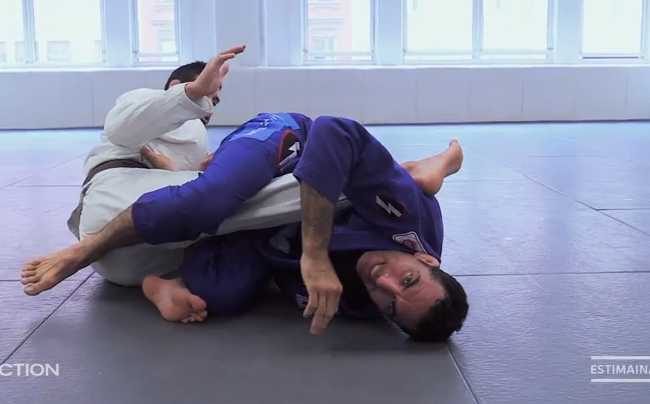Check out this article, published originally at: graciebarrabirmingham.com:
****
LSD for BJJ – Is it such a bad thing?

Photo by Gracie Barra Birmingham.
Firstly , the answer may be ‘no’.
And secondly, I should probably mention that we’re talking about Long Slow Duration training… not the hallucinogenic drug!
In recent times, many combat sports athletes have moved away from any form of long distance cardio work in favour of high intensity intervals and short bursts of all out work. Treadmill sprints, tabatas, barbell complexes and more. While these methods are extremely useful, they may not be right for everyone or at every stage of a strength and conditioning program. So why the need for LSD work? Won’t this type of training make us slow and lose explosiveness? If done correctly, the answer is no!
This fear comes from the understanding of how our muscle fibres work, so bear with me as this may be a little confusing! We have two types of muscle fibre. Type I fibres that generally have a very good oxygen supply and a high resistance to fatigue, and type II fibres that have a much more limited supply of oxygen but are able to produce power much more quickly than type I. We rely on these type 2 fibres for our strong, explosive actions such as snapping on that quick submission or going for that initial takedown, while the Type I fibres will keep us going for longer, slower actions. With traditional forms of aerobic work, the intensity gets so high that the type II fibres are brought into play to assist the Type Is in keeping us moving. If a high volume of this type of work is carried out, eventually the Type II fibres will begin to adapt and take on the characteristics of our less explosive Type I fibres. This is what we don’t want, but with the type of LSD work explained in this article, along with the fact that we will still be doing explosive work in our training and skill sessions, loss of explosiveness is of little concern.
First let’s take a very brief look at the three pathways our bodies use to produce energy.
The first two systems are anaerobic in nature, meaning they don’t use oxygen to create energy.
Anaerobic alactic – Capable of extremely high power production, this is the system primarily used in short sprints, powerful jumps, knockout punches and explosive takedowns. However, this system only produces energy for a very short amount of time before it is depleted; up to 15 seconds of all out work and it is exhausted.
Anaerobic lactic – Once the anaerobic alactic system runs out of steam , the lactic system takes over. This system is also capable of high power output which may last up to roughly 2 minutes, but this comes at a cost. As power is produced, the body also produces lactate. The lactate releases hydrogen ions into the system which may be responsible for the burning sensation we feel after short bouts of high-intensity activity. For this reason, we cannot rely on this system for an entire match.
Aerobic – Once the anaerobic systems are depleted, the aerobic system must take over energy production. While this system cannot produce energy as quickly as the anaerobic systems, it can do so for long periods of time without fatigue. With BJJ matches lasting between 5-10 minutes, we will rely on this system a great deal, despite many believing combat sports are primarily anaerobic in nature. The aerobic system is also responsible for clearing any waste products produced by the anaerobic systems, and so is very important for recovery too.
These three systems do not turn on and off like a switch; instead all 3 will be producing power at varying rates throughout all stages of exercise.
The brief explanation above explains why we need to build a powerful aerobic system. The ability to increase aerobic power output means that we can produce more power before having to rely on the anaerobic systems, which in turn means we will not fatigue as quickly.
To increase aerobic power output, we should first look at increasing the efficiency of the heart and how much blood it can pump with each beat. LSD is one of the most effective ways to achieve this but it is more specific than simply going for a jog. At certain heart rates, the left ventricle of the heart is maximally filled with blood. When filled for long enough, the walls of the heart will adapt and stretch, resulting in a greater volume and more blood being pumped with each beat. Imagine a balloon filled with water. If it is full for long enough, the balloon will stretch and become larger. This training method works on the same principle. However if the heart rate is too low, there will not be enough blood to maximally fill the left ventricle. If heart rate is too high, blood enters and leaves too quickly for maximal volume to be achieved.
For this reason, it is vital that a heart rate monitor is used for this type of training. I use a Polar F4 that can be picked up for around £40. It is a worthwhile investment and can be used for many other training methods so I highly recommend it! If your resting heart rate is currently higher than 60 beats per minute, this method will definitely be of great benefit to you. For more advanced athletes fighting in longer matches, you may want to get the resting heart rate down to 45-55 beats per minutes.
So the basic principles are as follows:
Keep the heart rate between 120-150 beats per minute (bpm)
Each session should be between 30-90 minutes long
1-2 sessions per week
This type of training can be carried out with various types of exercise. Jogging, cycling, rowing or even light sparring, BJJ drills and mobility circuits. Just choose something that you are comfortable with. For beginners especially, I prefer low/no impact methods such as cycling as it will reduce the risk of injury to the joints that can be associated with long distance running.
This type of work almost feels too easy, but don’t let that discourage you! This is actually a good thing as it means we are generally only using our Type I fibres to perform this type of exercise, meaning there is no chance for the Type II fibres to adapt and become less explosive.
Give it a shot for 4-6 weeks and see how you feel in training/sparring. Also take note of how hard you are working to keep your heart rate in the correct range. When you first start it may take very little work to get the heart rate up to 150, but after time you will have to work harder to get up there. This means you areproducing a higher power output at the same heart rate, which is exactly the effect we are looking for!
Read more at graciebarrabirmingham.com .


